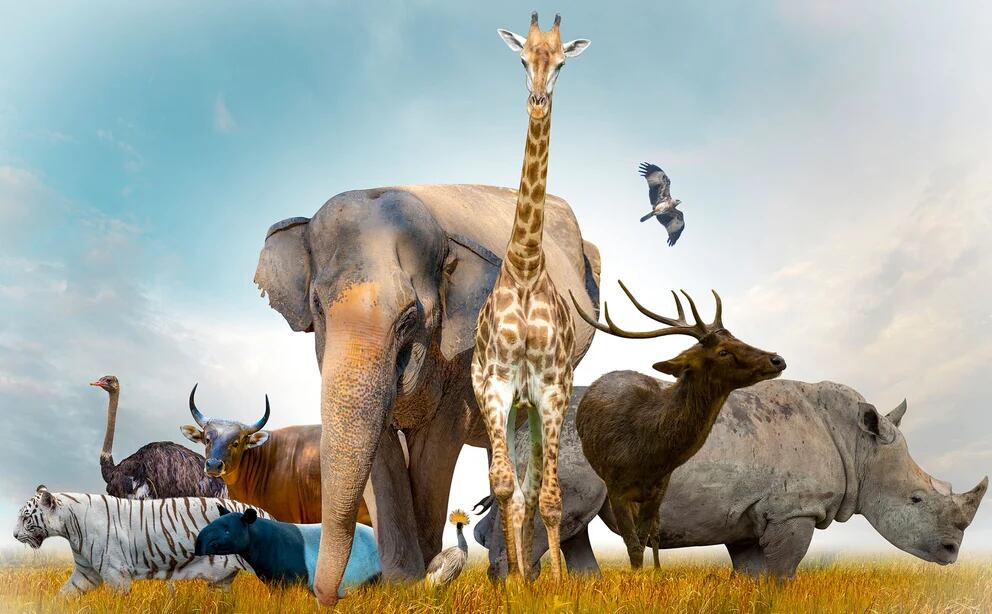Scientists believe we are going through it Sixth Great Extinction. a mass extinction It is a short geological period during which a high percentage of biodiversity or several species (bacteria, fungi, plants, mammals, birds, reptiles, amphibians, fish, invertebrates) become extinct. It is important to note that in geological time a ‘short’ period can span thousands or even millions of years. Previously, the planet had experienced five events mass extinction: The last one occurred 65.5 million years ago and ended the existence of the dinosaurs.
He BBVA Foundation Frontiers of Knowledge Award in Ecology and Conservation Biology has been granted in his XVI edition to two Mexican scientists who helped document and quantify the magnitude of the call Sixth Great Extinctionthat is, the enormous loss of biodiversity caused by human activity.
Gerardo Ceballosby National Autonomous University of Mexico and Rodolfo Dirzofrom Stanford University (USA), are “researchers at the forefront of ecology and conservation”, in the words of the jury, whose joint work in Latin America and Africa “has shown that current extinction rates for many organisms far exceed those produced in the previous two million years.”
In this way we document the unbridled disappearance of animals and plants in some of the most biodiverse habitats on Earth, both helped reveal that the current biodiversity crisis – as highlighted by the ruling – “is a period of particular acceleration in the loss of species taking place around the world.” for all groups of organisms, and the first directly related to the impact of a single species: ours.”
Sixth Great Extinction: The two award-winning ecologists are leaders in research into so-called defaunation
Specifically, the two award-winning ecologists are leaders in research into the so-called deniala term coined by Dirzo to describe the changes that the disappearance of animals causes in the structure and functioning of ecosystems.
Their work – the award document highlights – has revealed the destructive “chain effects” that the extermination of a species can cause, disrupting the network of interactions it maintains with other organisms, as well as its impact on human population, as a result of the loss of the goods and services they provide.
“The experimental work of Professors Ceballos and Dirzo has quantified the rate at which species are lost,” he explains. Pedro Jordanoresearch professor at the Department of Integrative Ecology of the Doñana-CSIC Biological Station and secretary of the jury.
“And what’s really surprising about their results is how this rate of species extinction, what’s called the process, has increased denialis happening today at a rate several orders of magnitude faster than that documented over the past two million years.
“This shows that we are dealing with a truly alarming situation that award-winning researchers have documented and quantified across thousands of species of vertebrates, invertebrates and plants.”
For his part, Miguel Bastos Araujo, research professor at the Department of Biogeography and Global Change of the National Museum of Natural Sciences-CSIC in Madrid and member of the jury, uses an analogy to underline the importance of the winners’ work: “Let’s imagine that we are traveling by plane and sit next to the window.
When we look through it, we see pieces of the plane coming loose. This isn’t something that’s rushed, but the first thought that comes to the passenger’s mind is: what is the ability of this plane to continue flying without the parts that make it up? Something similar happens with ecosystems. While they componentsspecies also lose vital functions.
“Dirzo and Ceballos’ work significantly contributes to the understanding of how these losses impact the resilience and sustainability of our ecosystems.”
Sixth Great Extinction: Human-Accelerated Extinction Rate
Ceballos and Dirzo’s research has been linked and complementary throughout almost their entire professional careers, but the origins of this collaboration date back to the early 1980s, when both coincided at the University of Wales (United States). Kingdom).
Dirzo obtained his PhD there while Ceballos completed his master’s studies. His first connections came about as a result of his concerns about man’s impact on nature, which began to become apparent. “Not only did we start having conversations in the field of science, but we also shared our concerns about what we were already seeing around us regarding the anthropogenic impact on the natural environment,” Dirzo recalls.
After this phase, Ceballos focused his research on the study of fauna and the extent of extinction, and Dirzo concentrated on the study of ecological interactions between plants and animals, as well as their consequences. become extinct.

